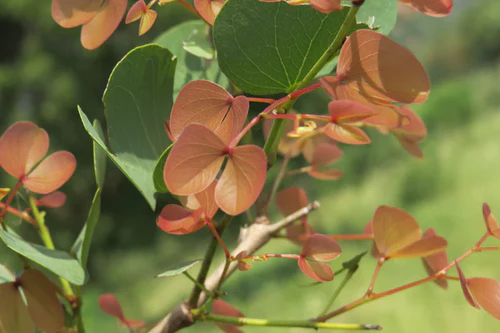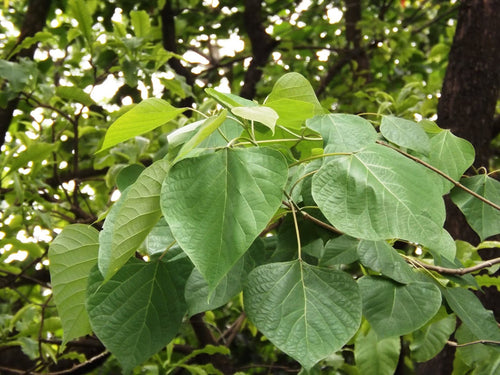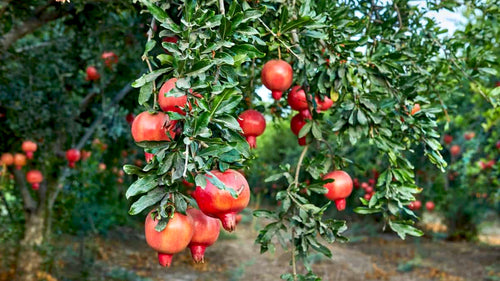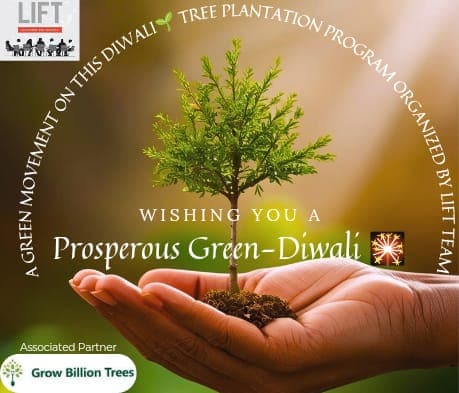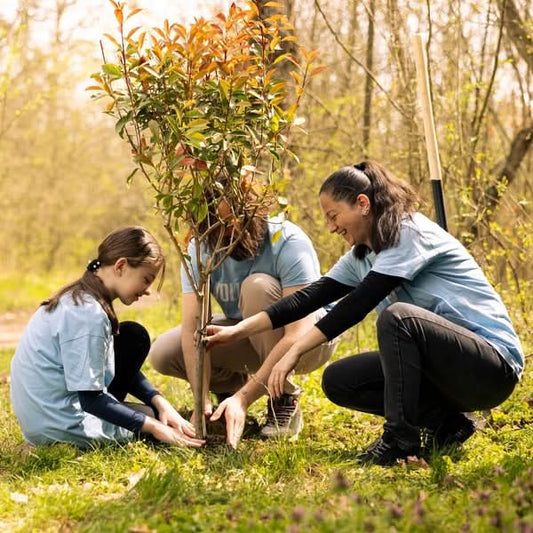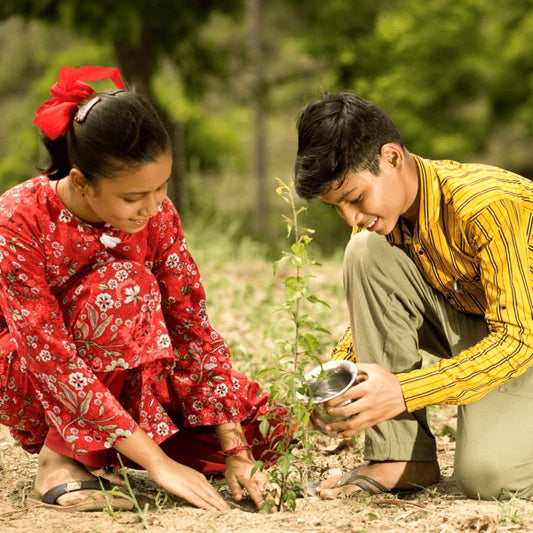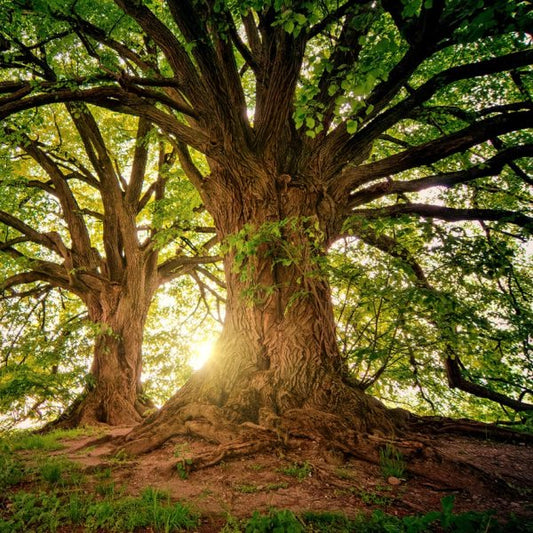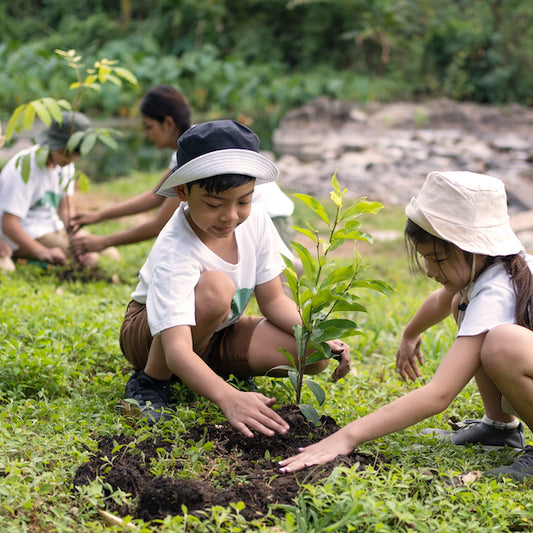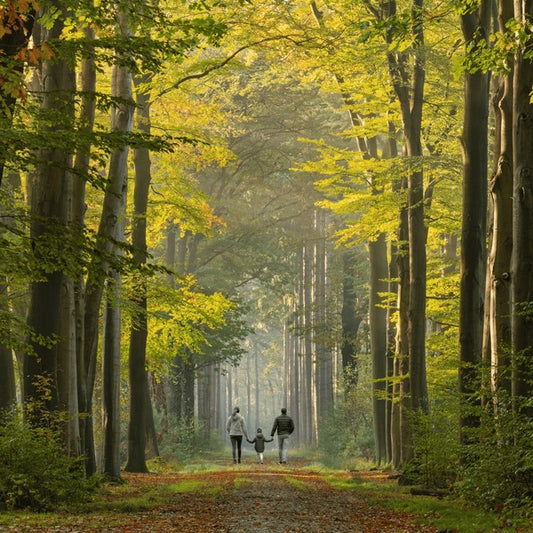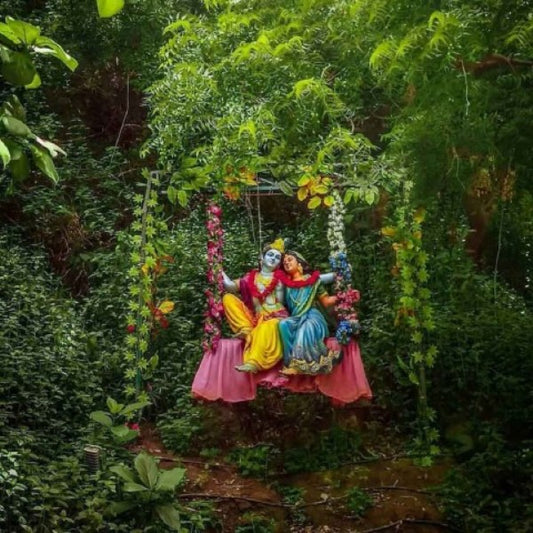Sailing Towards Sustainability: Castle Ships Plants a Miyawaki Forest
Castle Ships, a leading seaborne carrier of clean petroleum products, is charting a sustainable course through its tree plantation initiative based on Read more
Project Update 3
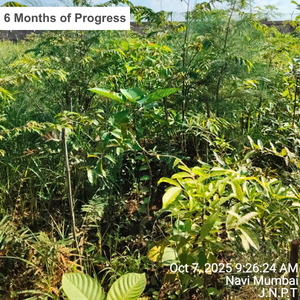
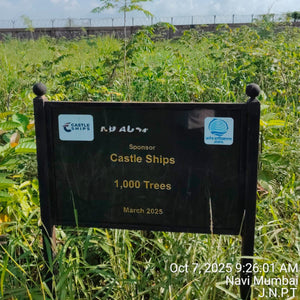
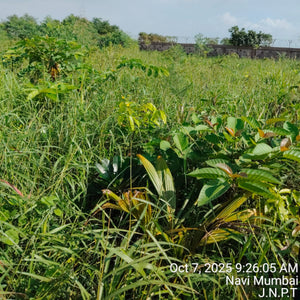
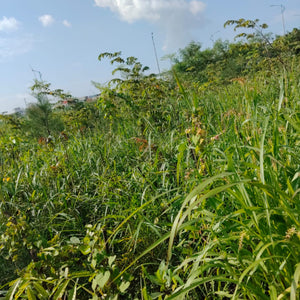
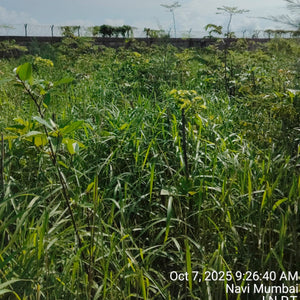
Project Update 2
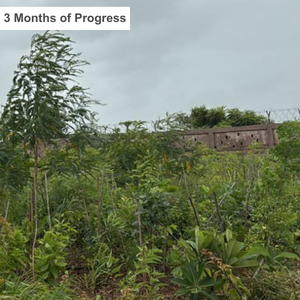
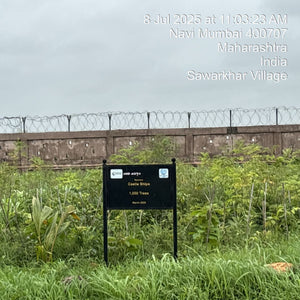
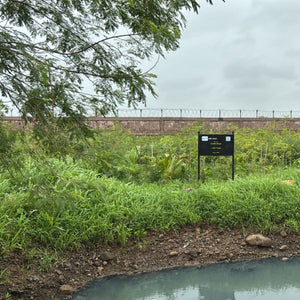
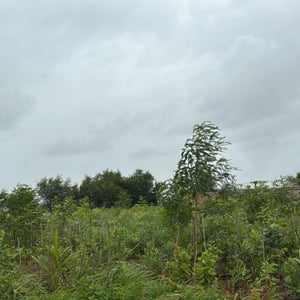
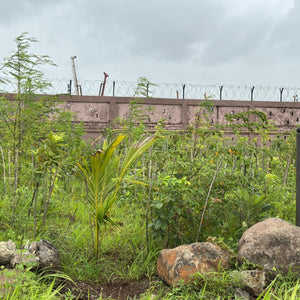
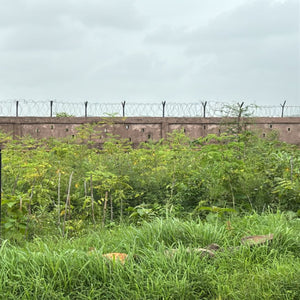
Project Update 1
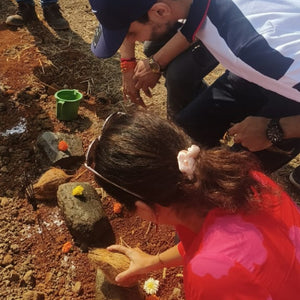
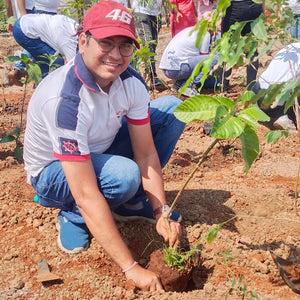
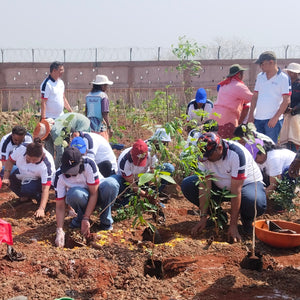
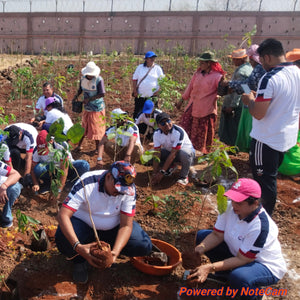
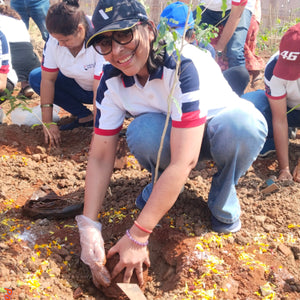
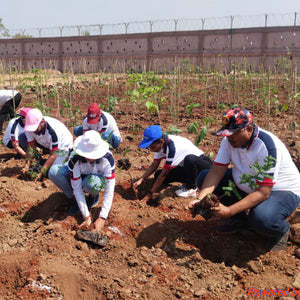
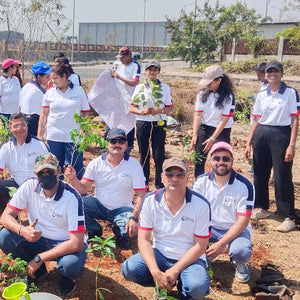
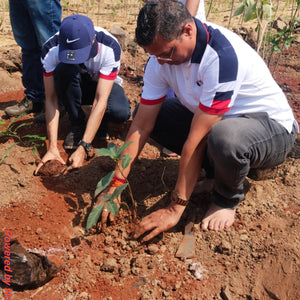
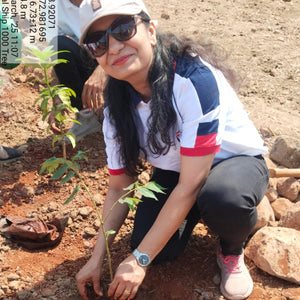
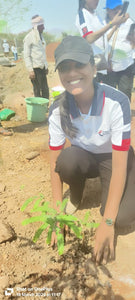
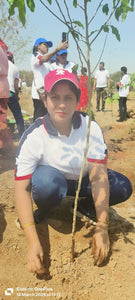
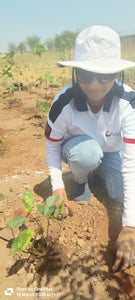
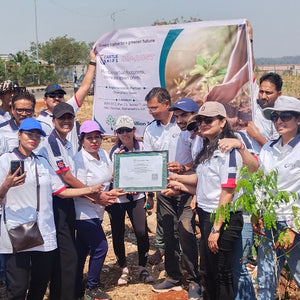
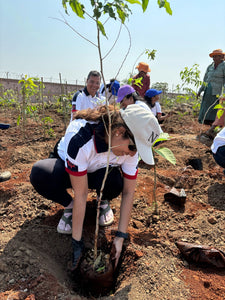
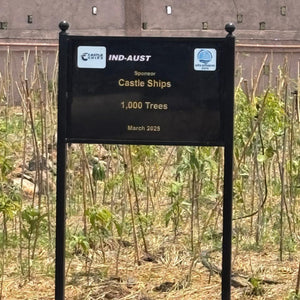
Digital Forest
Forest with 1,000 Trees planned
Want to plant your tree now?
Plant a Tree @ 299Sailing Towards Sustainability: Castle Ships Plants a Miyawaki Forest for Future Generations
Castle Ships, a leading seaborne carrier of clean petroleum products, is charting a sustainable course through its tree plantation initiative based on the Miyawaki forest concept. This initiative is driven by a commitment to environmental stewardship and aims to create dense, native green spaces that thrive with minimal maintenance.
By adopting the Miyawaki method, Castle Ships is enriching local biodiversity, fostering rapid forest growth, and significantly improving air quality in the port area. This initiative serves as a natural carbon sink, helping mitigate climate change by absorbing CO₂ emissions while enhancing ecological resilience. Through this green endeavor, Castle Ships is not only reinforcing its dedication to sustainability but also ensuring a healthier, greener future for generations to come.
Project Planning & Execution
No of Trees: 1000
Plantation Location: JNPA SEZ, Plot E6, Sector 7, Uran, Navi Mumbai, Maharashtra - 400702
Plantation Duration: 16th March - 18th March 2025
Names of Species: Saptparni, Kadam, Gular, Drumstick, Jamun, Putrajiva, Madhukamini, Bottle Brush, Kaner, Awala, Harshringar, Teak, Anar, Belpatra, Champa, Red Chandan, and Sonchapa
Species Selection & Its Benefits:
The species selected for Castle Ships’ Miyawaki plantation initiative were carefully chosen to align with the local ecosystem and maximize ecological benefits. A total of 1,000 trees were planted, comprising a diverse mix of native and ecologically significant species, including Saptparni, Kadam, Gular, Drumstick, Jamun, Putrajiva, Madhukamini, Bottle Brush, Kaner, Awala, Harshringar, Teak, Anar, Belpatra, Champa, Red Chandan, and Sonchapa. These species include native and fast-growing trees that enhance biodiversity, air purification, and soil enrichment.
Jamun, Awala, and Anar provide nutrient-rich fruits, supporting local wildlife and human health. Drumstick (Moringa) is known for its high medicinal value and soil-improving properties. Teak and Red Chandan contribute to carbon sequestration and timber value, ensuring long-term sustainability. Kadam, Gular, and Putrajiva support pollinators and birdlife, fostering urban biodiversity. Madhukamini, Champa, Sonchapa, and Bottle Brush are ornamental and fragrant, enhancing aesthetic appeal and attracting pollinators. Belpatra and Harshringar hold cultural and medicinal significance, making them valuable for community engagement. The inclusion of Kaner ensures green cover in harsh conditions, while Saptparni acts as a natural air purifier. Together, these species create a resilient, diverse, and sustainable green ecosystem that supports environmental conservation.
Beneficiaries Details
-
Target Population: Employees, stakeholders, and local community members of JNPA SEZ, Uran, Navi Mumbai, Maharashtra.
-
Age Group: Inclusive of all age groups, ensuring broad community participation.
-
Gender: Inclusive of all genders.
- Social & Economic Status: Open to all social and economic backgrounds, emphasizing community involvement.
Planting Methodology and Its Advantages
Miyawaki Technique: The Miyawaki technique is a dense afforestation method that promotes rapid green cover using native plant species. It consists of rapidly growing vegetation that develops 10 times faster and becomes 30 times denser than conventional plantations. By closely planting a diverse mix of flora, it creates a self-sustaining ecosystem that requires minimal maintenance. This method enhances biodiversity, improves air quality, absorbs carbon dioxide, and restores degraded land. Due to its high-density plantation style, it is especially effective in urban areas, offering environmental benefits such as temperature regulation, noise reduction, and soil enrichment.
Advantages of the Miyawaki Technique
-
Faster Growth: Vegetation grows up to 10 times faster than with conventional methods due to high-density planting, soil conditioning, and native species selection. It reaches maturity in 20-30 years instead of over a century, making it highly effective for ecological restoration.
-
Biodiversity Enhancement: The technique encourages a diverse mix of native species, supporting wildlife such as birds, insects, and small mammals, contributing to habitat restoration and ecosystem resilience.
-
Sustainability: After the initial 3 years, these green spaces become self-sustaining, requiring minimal intervention. Natural mulch helps retain moisture and suppresses weed growth, making maintenance cost-effective.
-
Soil Health Improvement: Organic matter decomposition enhances soil fertility while root systems aerate the ground, improving water retention and preventing erosion, especially in degraded or sloped areas.
-
Microclimate Regulation: The dense vegetation reduces heat absorption, increases moisture release, and combats the urban heat island effect, improving air quality and energy efficiency in nearby structures.
-
Space Efficiency: This method allows for high-density planting in small areas, making it ideal for urban spaces, schools, and community parks, even on degraded land.
-
Ecosystem Restoration: By using native species, these forests seamlessly reintegrate with local ecosystems, supporting pollinators and maintaining ecological balance.
- Low Water Consumption: Once established, the dense planting and bio mulch help retain moisture, reducing the need for frequent watering, making it a sustainable solution even in water-scarce regions.
Activities During Tree Plantation
During the tree plantation drive organised by Grow Billion Trees in collaboration with Castle Ship Pvt. Ltd., Ravi Bhatia, Director, Capt. Kamlesh Thakur, CEO of Castle Ship, along with his team of 25 enthusiastic employees, actively participated in the initiative alongside Ms. Rashmi Gupta and Mr. Sanjay Prajapat from Grow Billion Trees (GBT). This impactful initiative, which was held on 18th March, was part of a larger effort, as 900 saplings had already been planted before the main event.
Before the plantation, the site was carefully prepared with pits dug and nutrient-rich manure applied, ensuring the highest-quality planting conditions. The day began with a serene meditation session led by Ms. Anuja, from Ground Team, setting a mindful tone for the event. This moment of reflection helped participants connect with nature, grounding them in their collective mission. Following the meditation, the group took a thoughtful nature walk around the site to observe the thriving saplings already planted, reinforcing the importance of their efforts and the positive impact they were contributing to the environment.
Following this, the participants enthusiastically engaged in the tree plantation activity, working together to contribute towards a greener and healthier environment. A total of 100 saplings were planted and watered with great care, symbolizing a commitment to building a greener future. The initiative not only contributed to environmental sustainability but also fostered teamwork, environmental awareness, and a collective responsibility toward a greener future.
The day culminated in a photo session, capturing the vibrant energy of the group and the tangible results of their efforts. To close the event, participants gathered for light snacks, sharing stories and reflections, united by the knowledge that their collective efforts would help create a more sustainable and thriving environment for generations to come.
Conclusion Elements
Impact
Direct Impact
| Parameters | Values | References |
| No. of Trees Planted | 1,000 | |
| Green Cover (Acres) | 0.14 acre | |
| Carbon Sequestration Potential (KG) | 20 |
Small to medium-sized trees can sequester around 10–48 kilograms (22–106 pounds) of CO₂ annually. https://onetreeplanted.org/blogs/stories/how-much-co2-does-tree-absorb |
| Carbon Sequestration by 1000 mature trees ( Tons/year) | 20Tons | No. of Trees x Carbon Sequestration by 1 mature trees per year |
| Carbon Credit Equivalent | 20 | One carbon credit is equivalent to one tonne of carbon dioxide or the equivalent amount of another greenhouse gas. |
| Carbon Footprint of an avg Indian Citizen (Tons/Year) | 1.8 | https://www.iea.org/countries/india/emissions |
| Offsets Annual Carbon Footprint of (Adults) | 11 | Carbon offset by 1000 mature trees per year / Carbon Footprint of an avg Indian Citizen per year |
*This impact analysis is forward-looking (A Miyawaki - Forest project matures in 2-3 years)
Indirect Impact
Community Impact
-
Environmental Awareness: Involving employees and local communities in the plantation drive fosters greater awareness about environmental conservation and encourages sustainable practices in daily life.
-
Employee Morale & Engagement: The initiative instilled a sense of pride, ownership, and teamwork among employees, strengthening their connection to the company’s sustainability goals and fostering a culture of environmental responsibility.
-
Inspiration for Change: By showcasing the rapid and dense growth of Miyawaki forests, this project has inspired organizations, institutions, and local communities to adopt this innovative afforestation method, encouraging widespread urban greening and ecological restoration efforts.
-
Cultural Shift: The initiative cultivated a long-term mindset of sustainability, encouraging participants to become advocates for green practices in both their personal and professional lives.
-
Enhanced Community Collaboration: Strengthened ties between corporate stakeholders, local authorities, and environmental groups, creating a collaborative approach to sustainability.
Environmental Impact
-
Biodiversity Conservation - By introducing native plant species, the project supports local wildlife, including birds, insects, and pollinators, fostering a healthier and more diverse ecosystem.
-
Carbon Sequestration – The planted trees act as natural carbon sinks, absorbing carbon dioxide and helping mitigate climate change by reducing greenhouse gas emissions.
-
Air Purification – Trees filter pollutants such as carbon monoxide, nitrogen oxides, and particulate matter, improving air quality and promoting a healthier environment.
-
Microclimate Regulation –The plantation reduces the urban heat island effect, cooling the surrounding area and helping to regulate temperature, making urban environments more comfortable.
-
Water Conservation - The bio mulch created by the plantation helps retain soil moisture, reducing the need for frequent watering and promoting efficient water use in the ecosystem.
-
Soil Health Improvement – The plantation enriches soil fertility by adding organic matter, improving soil structure, and supporting surrounding vegetation.
-
Erosion Prevention – Tree roots stabilize the soil, preventing erosion caused by wind and water, which helps protect infrastructure, roads, and green spaces.
- Noise Reduction – Green spaces serve as natural sound barriers, dampening noise pollution and contributing to a quieter, more peaceful environment.
Achievements
SDG Goals Achieved Through Miyawaki Plantation
-
SDG 3: Good Health and Well-Being – The establishment of green spaces through this project promotes good health and well-being for the community. These green areas improve air quality, reduce stress, and contribute to the overall better mental and physical health of the community.
-
SDG 6: Clean Water and Sanitation – Through Castle Ship's tree plantation project, significant strides are made in water conservation. The planted trees enhance soil structure, increase water retention, and reduce surface runoff, preventing soil erosion and promoting groundwater recharge. This ensures sustainable water resources for the surrounding community, improving local access to clean water.
-
SDG 7: Affordable and Clean Energy – As part of its contribution to affordable and clean energy, Castle Ship Pvt. Ltd.'s plantation aids in cooling urban spaces, thus reducing the demand for air conditioning and lowering energy consumption. By mitigating heat and improving local microclimates, the initiative supports energy efficiency and reduces reliance on energy-intensive cooling systems.
-
SDG 8: Decent Work and Economic Growth – The plantation project by Castle Ship Pvt. Ltd. also provides economic opportunities by creating jobs and encouraging local engagement in the process of tree planting and maintenance. Employees and local workers gain skills, fostering economic development in the region while contributing to long-term sustainability.
-
SDG 9: Industry, Innovation, and Infrastructure – Castle Ship’s plantation also aligns with SDG 9, focusing on fostering innovation in sustainable practices. By utilizing advanced techniques like the Miyawaki method, the company contributes to the development of eco-friendly infrastructure, showcasing a sustainable approach to land use and environmental conservation. This innovation in planting methods helps restore degraded areas, enhancing green infrastructure.
-
SDG 11: Sustainable Cities and Communities – By planting in urban areas, it enhances green cover, reduces pollution, and helps combat the urban heat island effect, making cities more resilient and livable. This initiative contributes to the development of sustainable communities, providing residents with cleaner air, recreational spaces, and an improved quality of life.
-
SDG 12: Responsible Consumption and Production – The project encourages sustainable land use and responsible environmental management. By utilizing the Miyawaki technique, Castle Ship Pvt. Ltd. ensures that the plantation process is efficient, requiring minimal water and resources while promoting soil health and biodiversity.
-
SDG 13: Climate Action – Castle Ship Pvt. Ltd.'s tree plantation initiative contributes significantly to climate action by helping mitigate climate change through carbon sequestration. The newly planted greenery absorbs carbon dioxide, reducing the carbon footprint of the area. Additionally, the project combats the urban heat island effect, lowering temperatures and improving the local climate resilience.
-
SDG 15: Life on Land – The plantation directly supports biodiversity conservation by introducing a variety of native plant species, which provide vital habitats for local wildlife, including pollinators and small animals. This restoration of ecosystems helps prevent biodiversity loss and strengthens the surrounding natural environment, fostering a balanced and thriving ecosystem.
-
SDG 17: Partnerships for the Goals – Castle Ship Pvt. Ltd.’s plantation initiative promotes collaboration and partnerships with various stakeholders, including employees and Grow Billion Trees. By working together towards common goals, the project strengthens partnerships that amplify the positive impact on environmental sustainability and community well-being. The collective effort of all partners helps achieve shared goals and builds a network for future sustainable initiatives.
ESG Achieved through Miyawaki Plantation
-
Environmental Impact: Castle Ships Pvt. Ltd.'s Miyawaki plantation has a significant positive effect on the environment. By planting native species densely, it enhances biodiversity, provides vital habitats for wildlife, and supports the survival of pollinators and other beneficial organisms. Additionally, the dense green cover contributes to carbon sequestration, helping to mitigate climate change by absorbing carbon dioxide from the atmosphere. The plantation also promotes soil and water conservation, improving soil fertility, preventing erosion, and increasing water retention. These benefits ensure the health of the land and contribute to sustainable water management. Furthermore, the cooling effect generated by the dense vegetation combats the urban heat island effect, reducing temperature fluctuations and contributing to a more stable microclimate in urban spaces.
-
Social Impact: The Miyawaki plantation method encourages active community engagement by involving employees and other stakeholders in planting and maintaining green spaces. This participatory approach fosters a sense of ownership and pride, which leads to stronger community bonds and a collective responsibility for environmental sustainability. Moreover, the greenery helps to improve health and well-being by purifying the air, reducing pollutants, and creating more pleasant and healthier environments. These green spaces provide areas for relaxation and recreation, contributing to improved mental and physical health. The project also serves as an educational tool, raising awareness and informing the public about the importance of environmental conservation, sustainability practices, and the benefits of native vegetation. Furthermore, the project supports local livelihoods by generating employment opportunities in tree planting, maintenance, and environmental stewardship.
- Governance Impact: The Miyawaki plantation method also strengthens governance by promoting transparency and accountability in environmental practices. By following a structured, well-documented approach, the project ensures that all activities are carried out ethically and in accordance with environmental guidelines. The initiative supports compliance with local and global environmental regulations, ensuring that the project aligns with established sustainability standards. Additionally, the long-term sustainability of the plantation, requiring minimal intervention after the initial years, reflects the organization's commitment to responsible environmental stewardship. By focusing on sustainable practices, the project highlights the company’s dedication to governance and reinforces its role as a responsible corporate entity in contributing to environmental protection and social well-being.
Building Communities
One of the most profound impacts of Castle Ships' Miyawaki plantation initiative has been the spirit of unity and collaboration it fostered. By actively involving employees, local communities, and volunteers, the project became more than just a tree plantation drive it evolved into a shared mission to create resilient and sustainable green spaces. This collective effort has strengthened environmental consciousness and encouraged long-term stewardship of natural resources.
-
Empowering Communities: This initiative actively engages employees and stakeholders in the planting and maintenance processes. This involvement fosters a sense of ownership over the green spaces, empowering individuals to take responsibility for their environment. As participants contribute to the growth of their community’s green cover, they become more connected to their surroundings, building pride and a shared commitment to sustainability.
-
Fostering Meaningful Partnerships: The initiative brought together key stakeholders, including Castle Ship Pvt. Ltd., Grow Billion Trees, and local communities, demonstrating the power of collaboration in achieving lasting environmental and social change. These partnerships strengthened the collective commitment to sustainability, ensuring that afforestation efforts continue to thrive in the long run.
-
Inspiring a Ripple Effect: As the benefits of the afforestation project became evident improved air quality, enhanced biodiversity, and increased community engagement its impact extended beyond the immediate planting site. Local communities and organisations have been inspired to replicate similar initiatives, amplifying the project's reach and reinforcing the importance of urban greening.
This initiative exemplifies that true environmental sustainability is not just about planting trees it’s about nurturing awareness, fostering collaboration, and creating a shared vision for a healthier, greener, and more sustainable future.
Commitment by Grow Billion Trees
Trees for Corporates
Trending
Most Popular
1. Castle Ships Green Initiative
Castle Ships isn’t just navigating the seas—it’s steering towards sustainability! With its Miyawaki forest plantation initiative, the company is making waves in environmental conservation. By planting dense, fast-growing urban forests in port areas, Castle Ships ensures cleaner air, reduced carbon footprints, and a greener future. This initiative isn’t just about trees; it’s about taking responsibility for a healthier planet while keeping the maritime industry eco-friendly. With employees and Grow Billion Trees (GBT) volunteers getting their hands dirty, this is corporate sustainability done right. Who knew shipping and forests could go hand in hand? Well, Castle Ships did! 🌿🚢
2. Miyawaki Forest Benefits in Port Areas
Ports are bustling hubs of trade, but they’re also pollution hotspots. Enter Miyawaki forests—Castle Ships' secret weapon against carbon overload! These dense, native forests act as natural air filters, sucking in CO₂ and pumping out fresh oxygen. Unlike traditional plantations, Miyawaki forests grow 10 times faster and are 30 times denser, making them perfect for urban greening. Castle Ships’ initiative is turning ports into mini jungles, proving that even the most industrial spaces can be transformed into eco-paradises. Who needs a tropical vacation when your workplace feels like one?
3. Employee Engagement Through Tree Plantation
Forget boring team-building exercises—Castle Ships is all about green bonding! Employees swapped laptops for shovels as they joined GBT volunteers in planting saplings in pre-dug pits. The result? A thriving Miyawaki forest and a workforce that truly connects with nature. This initiative doesn’t just build forests; it builds team spirit, eco-consciousness, and a sense of purpose. After all, nothing says "we work well together" like digging, planting, and watering in the name of sustainability. Plus, it’s way more fun than another PowerPoint presentation!
4. Climate Action with Miyawaki Forests
Climate change? Castle Ships is fighting it—one tree at a time! Miyawaki forests are like nature’s superheroes, rapidly absorbing CO₂ and cooling down urban heat islands. These forests trap pollutants, improve soil health, and create self-sustaining ecosystems. By integrating this concept into port areas, Castle Ships is reducing its environmental footprint while setting a green example for the shipping industry. Who knew that planting trees could be the ultimate climate crisis hack? Well, Castle Ships did—and they’re proving it with every sapling in the ground!
5. Biodiversity Boost with Miyawaki Forests
Ports are usually concrete jungles, but Castle Ships is bringing back the real jungle! The Miyawaki method involves diverse native species, creating a habitat where birds, insects, and small wildlife can thrive. These forests support natural pollinators, prevent soil erosion, and enhance ecological balance. Thanks to Castle Ships, ports aren’t just about ships and cargo anymore—they’re also buzzing with life. Who knew that a shipping hub could be a wildlife sanctuary in disguise? Nature and business CAN coexist, and this initiative proves it!
6. Castle Ships' ESG Commitment
Sustainability isn’t just a buzzword for Castle Ships—it’s a way of doing business. This Miyawaki forest plantation aligns perfectly with Environmental, Social, and Governance (ESG) goals. By planting trees, Castle Ships is tackling climate change (E), engaging employees and local communities (S), and showcasing strong leadership in eco-friendly maritime practices (G). In a world where businesses are judged by their impact, Castle Ships is making sure its legacy is green, not just profitable. Now, that’s smart business with a conscience!
7. Partnerships for Sustainability
Castle Ships & GBT Teaming up with Grow Billion Trees (GBT), Castle Ships is proving that collaboration is key in saving the planet. This partnership brings expert afforestation knowledge, ensuring that every tree planted thrives for generations. GBT provides the know-how, and Castle Ships provides the commitment—together, they’re creating forests that fight pollution, improve biodiversity, and tackle climate change. This isn’t just corporate responsibility; it’s corporate action at its finest. Business + nature = a winning equation!
8. Sustainable Ports with Miyawaki Forests
A port with forests? Castle Ships says yes, please! Ports are crucial for global trade but often contribute to pollution and habitat loss. By introducing Miyawaki forests, Castle Ships is revolutionizing the idea of eco-friendly maritime hubs. These forests don’t just absorb CO₂; they also create natural noise barriers, prevent soil degradation, and reduce temperature spikes in industrial zones. With Castle Ships leading the charge, ports are no longer just transit points—they’re turning into green, breathing spaces for the future!
FAQ
What is the importance of tree plantation in India?
Tree plantation is crucial in India to combat deforestation, improve air quality, and fight climate change. Trees absorb carbon dioxide, release oxygen, and support biodiversity. At Castle Ships, we recognize the role of trees in creating a sustainable future, which is why we have adopted the Miyawaki forest method to restore green cover in port areas. Our initiative helps mitigate pollution, provides shelter to wildlife, and enhances ecological balance. Tree plantation is not just an environmental responsibility—it’s a necessity for a healthier, greener India.
What is the Miyawaki forest concept, and how does it work?
The Miyawaki method is an advanced afforestation technique that creates dense, fast-growing native forests. It involves planting a diverse mix of indigenous species close together, encouraging rapid growth and self-sufficiency. Castle Ships has implemented this method in port areas to improve air quality and restore biodiversity. These forests grow 10 times faster, absorb more CO₂, and require minimal maintenance after three years. By following the Miyawaki concept, we ensure that our green initiatives make a lasting environmental impact.
Why has Castle Ships adopted the Miyawaki forest method?
Castle Ships is committed to sustainability, and the Miyawaki method aligns perfectly with our vision. Ports are industrial hubs with high pollution levels, and Miyawaki forests offer an effective solution by absorbing CO₂ and improving air quality. This method helps us create dense, self-sustaining forests in limited spaces, ensuring long-term environmental benefits. By using this innovative technique, we are taking responsibility for reducing our carbon footprint and making maritime operations greener.
How does Castle Ships' tree plantation initiative help the environment?
Our tree plantation initiative improves air quality, enriches biodiversity, and mitigates climate change. The dense Miyawaki forests absorb pollutants, cool down surrounding areas, and act as carbon sinks. These forests also provide shelter for birds and insects, restoring ecological balance in port areas. By planting trees, Castle Ships is actively contributing to a greener and more sustainable environment, ensuring that future generations benefit from cleaner air and healthier ecosystems.
How does tree plantation contribute to climate action?
Tree plantation is one of the most effective ways to combat climate change. Trees absorb carbon dioxide, store carbon, and release oxygen, making them essential in reducing global warming. At Castle Ships, our Miyawaki forest initiative helps offset carbon emissions from maritime activities while creating green spaces in industrial zones. By planting fast-growing native trees, we are accelerating climate action and promoting a sustainable future.
What role do employees play in Castle Ships' tree plantation initiative?
Castle Ships encourages active employee participation in our tree plantation drives. Employees, alongside Grow Billion Trees (GBT) volunteers, plant saplings in pre-prepared pits and water them. This hands-on approach fosters environmental awareness, strengthens team spirit, and instills a sense of responsibility toward sustainability. By engaging employees in green initiatives, we are building a corporate culture that values and prioritizes environmental conservation.
What Sustainable Development Goals (SDGs) does Castle Ships’ tree plantation initiative support?
Our initiative aligns with multiple SDGs, including Climate Action (SDG 13), Life on Land (SDG 15), and Sustainable Cities and Communities (SDG 11). By planting Miyawaki forests, we enhance biodiversity, reduce carbon footprints, and promote urban greening. Additionally, our partnership with Grow Billion Trees supports Partnerships for the Goals (SDG 17). At Castle Ships, we integrate sustainability into our business strategy to create lasting environmental and social impact.
How does tree plantation improve biodiversity in port areas?
Ports are usually industrial zones with limited green cover, making them unsuitable for wildlife. By planting Miyawaki forests, Castle Ships is restoring biodiversity in these areas. These dense forests attract birds, butterflies, and pollinators, creating a thriving ecosystem. Native plants grow in a natural habitat, ensuring a self-sustaining green cover that supports local flora and fauna. Our initiative turns ports into biodiversity hotspots, proving that industry and nature can coexist.
How does Castle Ships ensure the long-term success of its Miyawaki forests?
Our tree plantation initiative follows scientific afforestation methods to ensure long-term survival. The Miyawaki forests require intensive care for the first three years, after which they become self-sustaining. We carefully select native species, maintain soil health, and monitor tree growth regularly. By partnering with Grow Billion Trees, we ensure expert guidance and long-term sustainability. Castle Ships is committed to creating green spaces that thrive for generations.
How does Castle Ships’ partnership with Grow Billion Trees contribute to sustainability?
Our partnership with Grow Billion Trees (GBT) brings expertise in afforestation, ensuring the success of our tree plantation initiatives. GBT provides technical knowledge, selects suitable tree species, and oversees the long-term maintenance of our Miyawaki forests. This collaboration strengthens our commitment to environmental sustainability, aligns with global green goals, and promotes corporate responsibility. Together, we are making a meaningful impact in restoring nature while supporting the broader fight against climate change.
- Choosing a selection results in a full page refresh.
- Opens in a new window.



